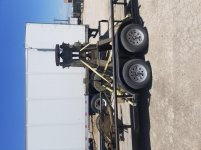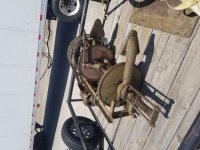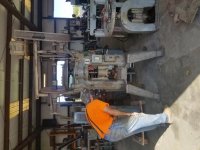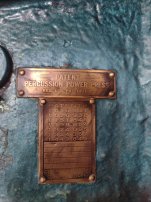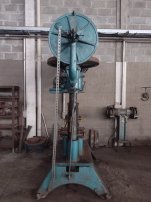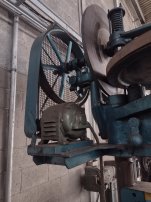thats what blacksmiths would call a powered, or motorized, fly press. I know a several blacksmiths who have one of those. There is a taller, skinnier version that was, I believe, from the automotive industry, used for making smaller sheet metal stampings. I have seen one in Philly and one in Illinois. Blacksmiths like them for punching, and stamping work, hot, where you are doing small quantities, but the ability to locate tooling accurately while working is important.
I have a now deceased friend who imported a few from Korea, maybe 20 years ago. They are pretty common in Korea, for small shops. He had a 100 ton version in his shop, and he used it to make tooling for blacksmithing- He made texture dies for power hammers, he made thousands of parts on a machine like this. He had a forge with a motorized rotary table under the floor, so he could put in one tool steel blank, hit the foot pedal and rotate the table one position, which in turn would place a nice orange hot blank which had been in the forge for a while, in front of the door. Grab the hot one with tongs, swivel his body and place it in the press like this, hit the foot pedal for the press, and it gets 100 tons of pressure. swivel his body the other way, drop it in the oil quench tank, and back to the forge. He could make a hundred parts in an hour.
Fly presses are just manual versions of these, and metalworkers all over europe have been using them for centuries for stampings, jewelry, bending parts, punching, and more.






